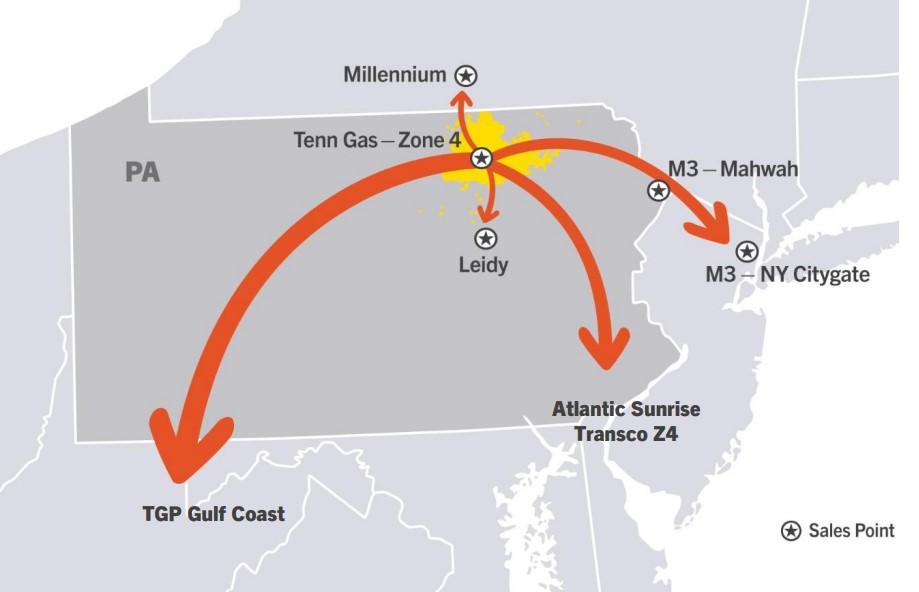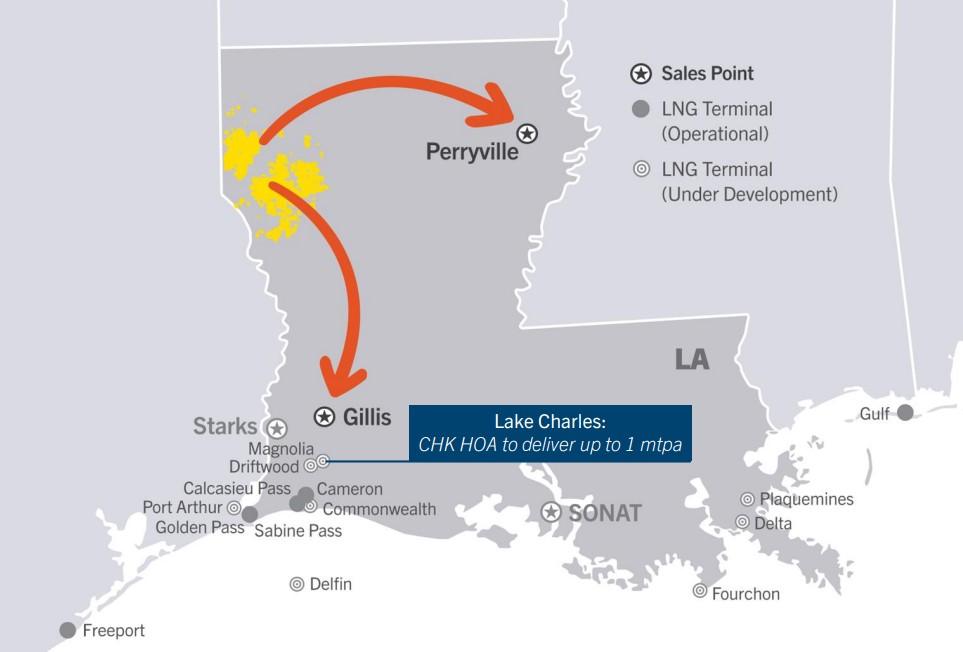
Chesapeake also isn’t opposed to expanding into new basins, but the company likes the places it already has large footprints in. (Source: Shutterstock)
Rumors are swirling that Chesapeake Energy is on the hunt for large-scale M&A. But executives say Chesapeake doesn’t feel forced to ink a deal anytime soon.
Oklahoma City-based Chesapeake Energy Corp. has reportedly held discussions about a potential acquisition of Spring, Texas-based Southwestern Energy Co.
Analysts say such a combination would create a premier public shale gas producer, with assets across both the Marcellus and Haynesville shale plays.
But Chesapeake executives were mum on specifics during the natural gas company’s third-quarter earnings call.
“We certainly don't feel compelled to do anything on [a] near-term timetable,” said Nick Dell'Osso, Chesapeake’s president and CEO, during the call. “But at the same time, we believe in consolidation.”
Chesapeake has a laundry list of non-negotiables it looks for when pursuing M&A, Dell'Osso said—including not overpaying for a deal, driving valuable accretion through a transaction, protecting its balance sheet and finding assets with a favorable emissions profile.
“What that really means, at the end of the day, is that you have to make your company better through consolidation—not just bigger,” he said.
Chesapeake also isn’t opposed to expanding into new basins, but the company likes the places it already has large footprints in. The company sees the Marcellus and Haynesville positioned “at the top of the heap for natural gas supply and demand fundamentals”—and able to deliver against those fundamentals for years to come, Dell'Osso said.

It would take a particularly sweet deal to lure Chesapeake into a new gas play.
“If you wanted to apply those non-negotiables to a place we don't operate today, that bar is even higher,” he said.
Outside of deal talks with Southwestern, analysts at Truist Securities said they expect that Chesapeake is also having conversations with other E&Ps for either acquisitions or joint ventures.
One potential opportunity singled out during the analyst call: European major BP’s portfolio in the Haynesville Basin. Chesapeake CFO Mohit Singh—who joined Chesapeake after working for BP’s U.S. onshore subsidiary, BPX Energy—agreed that BP’s Haynesville position “is very competitive.”
RELATED
Kimmeridge Exec: Chesapeake-Southwestern is Gas Sector’s ‘Most Logical Combination’
‘Be LNG ready’
Chesapeake divested its final pieces of acreage in the Eagle Ford Shale earlier this year as part of a strategic transition into being a pure-play natural gas producer.
The company exited the Eagle Ford across three separate deals with SilverBow Resources, INEOS Energy and WildFire Energy this year. The sales generated proceeds of more than $3.5 billion.
With domestic natural gas demand expected to skyrocket to fuel new U.S. LNG export capacity coming online in the next few years, Chesapeake is positioning itself to “be LNG ready.”
Alongside its third-quarter earnings, Chesapeake announced entering into a long-term LNG supply heads of agreement (HOA) with global commodities trader Vitol Inc.
Chesapeake will supply up to 1 million tonnes per annum (mtpa) of LNG to Vitol for 15 years, with purchase prices linked to the international Japan Korea Marker (JKM).
The two companies plan to jointly select “the most optimal liquefaction facility” in the U.S. to super-chill the Haynesville gas produced by Chesapeake.
Earlier this year, Chesapeake entered into a long-term LNG supply agreement with commodities trader Gunvor Singapore Pte Ltd. Chesapeake will supply Energy Transfer’s Lake Charles LNG facility enough gas to produce up to 1 mtpa of LNG which, after liquefaction, would be purchased by Gunvor at JKM-indexed prices over 15 years.
“Our approach to executing our LNG strategy has been consistent and benefits from production that is physically linked to LNG markets, access to international prices and downside protection through cancellation optionality,” Dell'Osso said.

Chesapeake believes its Haynesville gas production is well-positioned to capitalize on growing gas supply demand by Gulf Coast LNG projects. (Source: Chesapeake investor presentation)
Gas demand to fuel U.S. LNG exports is forecasted to grow by 17.4 Bcf/d between 2023 and 2030, according to East Daley Analytics. Total peak LNG export capacity in 2022 was about 13.9 Bcf/d, according to Energy Information Administration data.
It’s such a huge amount of demand growth, even some of the nation’s most adept producers have wondered how the gas will be supplied.
RELATED
Rockcliff CEO on US LNG: ‘Where Is All This Gas Going to Come From?’
Ground game
Chesapeake’s third-quarter average production came in at an equivalent of 3.495 Bcf/d (97% natural gas; 3% total liquids). The company used an average of nine rigs to drill 35 wells in the third quarter—down from 53 wells drilled the quarter before.
So far this year, Chesapeake has added 34,000 additional net lease acres in the Marcellus and Haynesville plays at an average cost of $1,500 per acre.
Chesapeake is currently running nine rigs and three completion crews—four rigs and two crews in the Marcellus, and five rigs and one crew in the Haynesville.
The company plans to continue at its current rig cadence in the Marcellus and Haynesville heading into the first part of 2024, Dell'Osso said.
Recommended Reading
ONEOK Offers $7B in Notes to Fund EnLink, Medallion Midstream Deals
2024-09-11 - ONEOK intends to use the proceeds to fund its previously announced acquisition of Global Infrastructure Partners’ interest in midstream companies EnLink and Medallion.
Dividends Declared in the Week of July 22
2024-07-25 - Second quarter earnings are underway, and companies are declaring dividends.
Dividends Declared in the Week of Aug. 2
2024-08-02 - Here is a selection of dividends declared for the week of Aug. 2 for a selection of upstream, midstream and service & supply companies.
Delek Logistics Offering Senior Notes to Pay Off Debt
2024-08-15 - Delek Logistics Partners and its subsidiary plan to use the net proceeds from the senior notes offering to pay off a portion of the outstanding borrowings from its credit facility.
Trans Mountain Appoints New CEO, President
2024-08-23 - Trans Mountain appointed Mark Maki to CEO, succeeding Dawn Farrell who will now be chairman of the board.
Comments
Add new comment
This conversation is moderated according to Hart Energy community rules. Please read the rules before joining the discussion. If you’re experiencing any technical problems, please contact our customer care team.






